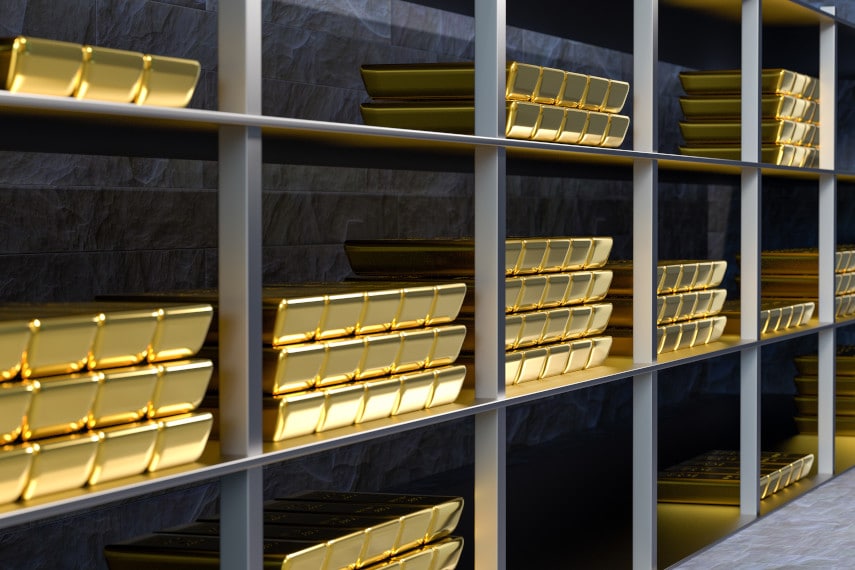
If you listen to central bankers’ public comments, they love to talk about how sound and secure their currencies are. To them, loose monetary policy is nothing to worry about. Just trust that the dollar, euro, pound, yen, etc. are here to stay. But behind closed doors, many central bankers don’t have that same trust in fiat currency.
That’s particularly true for central bankers from non-G7 countries, those whose currencies aren’t world reserve currencies. They’re the ones whose countries are most at risk from excessively loose monetary policy. Consequently, they’re the ones who most often look to protect themselves with gold.
If the Federal Reserve continues to devalue the dollar, the impact on US consumers is largely negative, particularly if higher inflation results. But a devalued dollar also makes exports cheaper, giving at least some benefit to US businesses.
Those cheaper exports harm producers in foreign countries, making their products less competitive. And so smaller countries’ central banks are constantly looking to protect themselves against the effects of dollar devaluation. One of the ways they do that is by increasing their supply of gold reserves.
Large Western countries generally have large stocks of gold reserves, so they don’t have to worry about increasing their stores. The US holds far and away more gold than any other country, with over 8,000 tonnes. Germany, Italy, and France combined have over 8,000 tonnes, Russia has nearly 2,300, China has nearly 2,000, Switzerland has over 1,000, and Japan has 765 tonnes.
As you can see, major world powers and issuers of reserve currencies are pretty well stocked when it comes to gold. But smaller countries normally aren’t in such great shape. That’s part of what continues to drive the continued demand by central banks to purchase more and more gold.
Big Movers in 2021
One of the biggest trends in gold markets in recent years has been the decision by central banks to become net buyers of gold rather than net sellers. It wasn’t that long ago that major central banks colluded through the Central Bank Gold Agreements (CBGA) to try to suppress the price of gold on world markets by making periodic sales. The CBGA expired years ago, and now central banks have become net buyers rather than sellers.
In the first half of this year, central banks purchased over 300 tonnes of gold. Among the biggest buyers were Thailand, Hungary, Brazil, and India.
The Reserve Bank of India actually set a record for the size of its gold purchase, purchasing 29 tonnes of gold, pushing its total reserves to over 700 tonnes. That equates to a 27% increase in its gold holdings over the past two years.
It’s particularly ironic that India is boosting its reserves, as the Indian government has for years tried to suppress the local gold market, through a combination of import quotas and taxes. None of that has been successful at suppressing gold demand in India, which has traditionally been one of the major players in world gold markets.
Indian gold demand, particularly during the wedding season, plays a strong role in overall world gold demand. But after unsuccessful attempts to discourage private gold ownership, the Reserve Bank of India must have figured that if you can’t beat ‘em, you might as well join ‘em.
Brazil’s gold purchases were also significant, purchasing 62 tonnes of gold this year through July to nearly double the central bank’s holdings to 130 tonnes. Those are the first purchases Brazil has made in nearly a decade. With that much being bought in just three months this year, will Brazil continue to add to its gold holdings?
What the Future Holds for Gold
The trend of central banks continuing to be net buyers of gold certainly appears to be strong. It isn’t just small central banks buying gold either, as Brazil and India are large countries with pretty sizable economies.
The only thing that could conceivably lead to central banks tapering off their gold purchases would be a significant increase in the gold price. But while that might make central banks potentially rethink their gold purchases, it would be great news for gold investors.
Gold Is the Ultimate Money
At the end of the day, central bankers realize that paper currencies will eventually fail. It’s a matter of when, not if, but no central banker wants that to happen on their watch. And despite the public faith they place in paper currency, the fact that they buy gold means that they’re hedging their bets, making sure that the central bank maintains actual physical assets upon which it can draw in the event of a monetary meltdown.
Gold has served as money for millennia, and will continue to serve as money once our current experiment in fiat paper currency ends. Central banks understand that, and many are now looking to gold to help shore up their balance sheets in the expectation that the monetary system may come falling down sooner rather than later.
Gold can play an important role in building up your assets too, as it has done for millions of investors over the years. More and more investors today are choosing to invest in gold, confident that it is in the beginning stages of yet another bull market. With the outlook for the economy darkening every day, inflation rising, and millions of Americans still unemployed, the prospects for significant growth in the gold price over the coming years are strengthening.
With modern developments in gold investing, it can be easier than ever to dive into the world of precious metals investing. The choices available to gold investors are more numerous than ever, with gold coins and bars of every conceivable size and design available almost at the click of a mouse.
For investors looking to protect their retirement savings, there is even a gold IRA, which offers the same tax benefits as a conventional IRA but offers you the opportunity to invest in physical gold coins or bars. If you have existing retirement accounts such as a 401(k), 403(b), TSP, IRA or similar account, you can even roll over or transfer assets from those accounts into a gold IRA tax-free. That allows you to protect your existing gains while putting them to work investing in physical gold.
However you decide to buy gold, Goldco’s precious metals experts are here to help you through every step of the process. If you have questions about buying gold, about how a gold IRA works, or about what types of gold coins are available to you, our experts can answer all of your questions.
Don’t let the opportunity to invest in gold pass you by. Call Goldco today to learn more about how you can protect your assets with an investment in gold.






